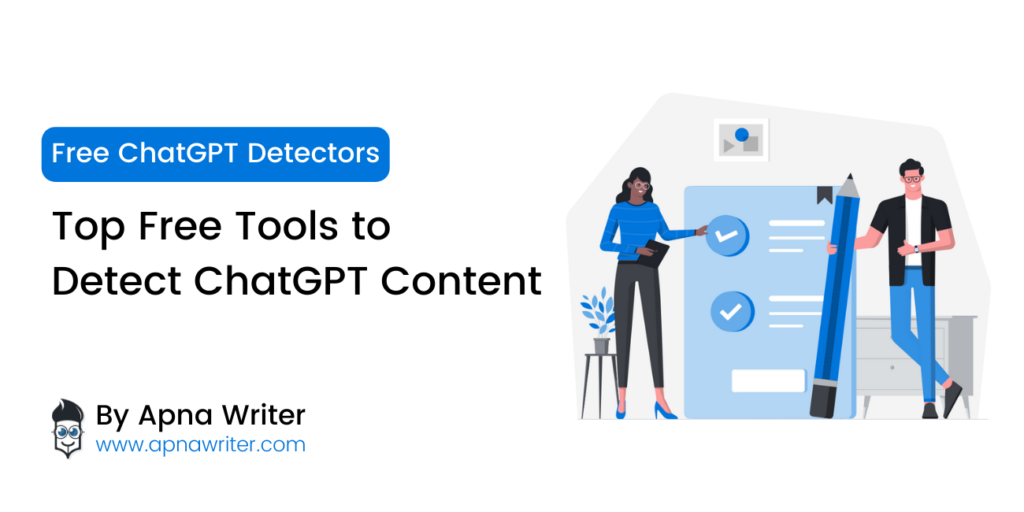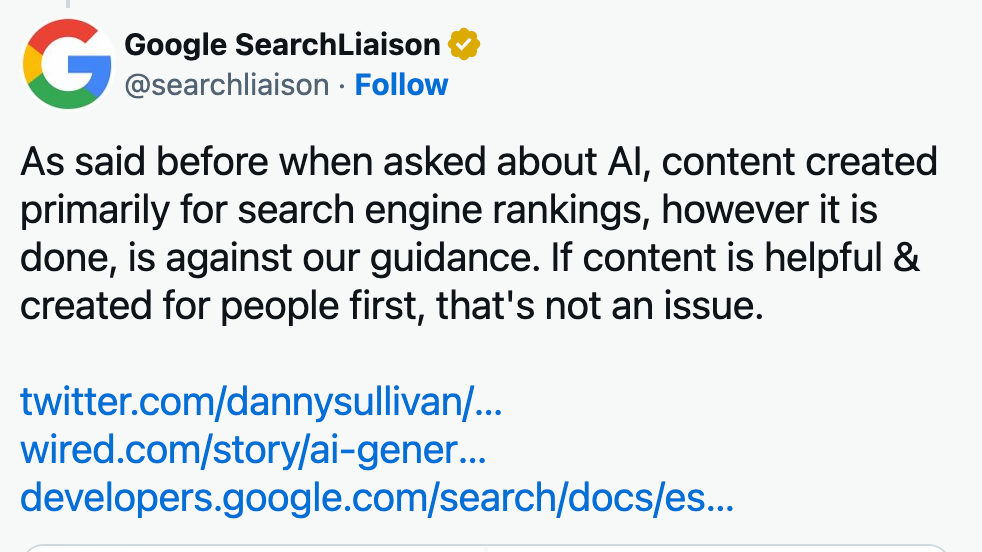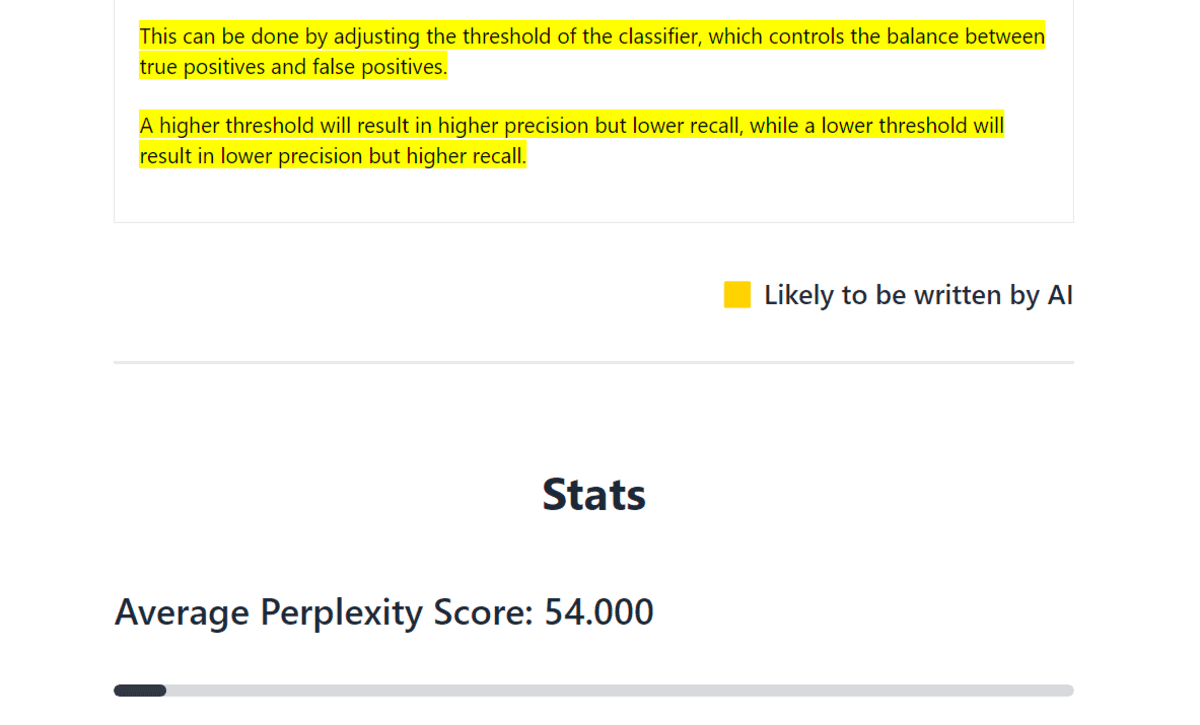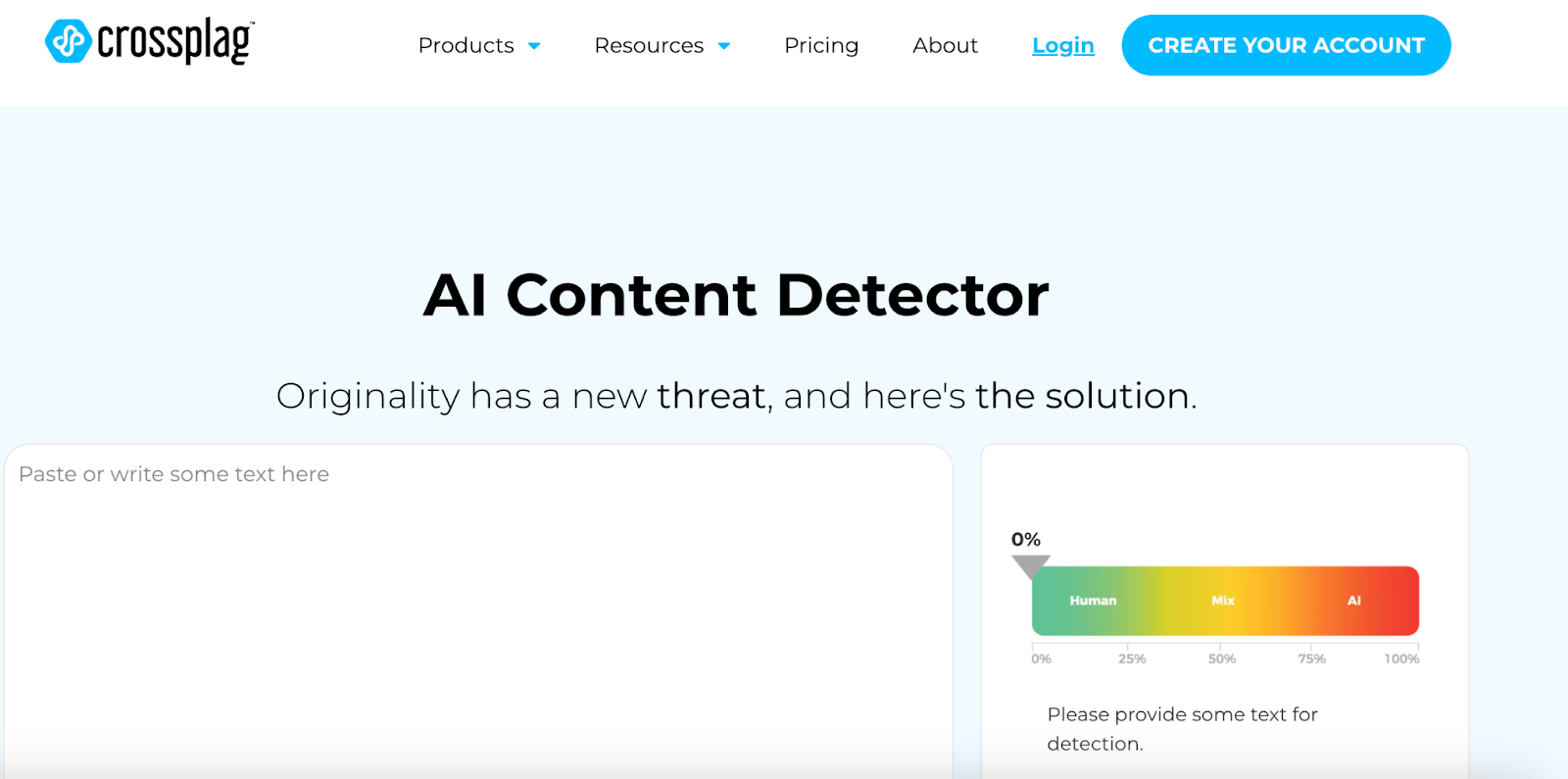On March 14th, 2023, OpenAI released a highly anticipated update to ChatGPT. GPT-4 was launched with the company’s effort in scaling up deep learning.
With 25 million daily users, ChatGPT has become the front phase for AI content generation.
You might have heard that the platform builds websites and applications and generates business content. But with the increasing use of AI-powered language models, the essence of human touch and emotions is missing.
Although AI-generated might help you fill up your content space, it won’t build a deeper connection with the audience.
So, how to avoid AI-generated content for your digital presence?
What tools can help you restrict the blandness of AI-generated content?
Let’s find out.
Table of Contents
ToggleWhat Is AI Content?
Artificial intelligence (AI)-generated content uses AI technology to create, optimize, and distribute content.
It has the potential to help content creators reduce their research time, optimize their content quality, and reduce the cost and time of producing it. The hype of AI generative tools has become real as the global AI text generator market size was estimated at USD 392.0 million in 2022.
But why are most professionals glued to AI content-generation tools?
One of the vital uses of AI is in content creation. AI algorithms can generate written content like news articles, product descriptions, and social media posts.
For example, GPT-4, one of the most advanced AI language models to date, can write coherent and grammatically correct sentences and even entire articles almost indistinguishable from those written by human authors.
But it misses many things that are highly important for your business.
What Is ChatGPT and Why Is it Trending?
Developed by OpenAI, ChatGPT is a large language model based on the GPT-4 architecture. It can generate human-like responses to written text input.
ChatGPT has been developed by training it on massive amounts of text data, enabling it to comprehend and reply to a broad spectrum of subjects and queries.
For example, ChatGPT can learn from the text input it receives to generate increasingly accurate and contextually relevant responses.
Impressive, right?
The platform was appreciated globally in the commercial online industry as it took only 5 days to hit the million-user mark.
Also, because of its capability to carry out natural language processing (NLP) tasks like generating text-based content and answering questions with high accuracy, it has become a hot topic in 2023.
That’s not it.
Here are some other reasons for its popularity:
Advancing Healthcare
Medical professionals are utilizing ChatGPT to create chatbots that can support them in offering medical advice and addressing patients’ concerns.
A recent study on the preprint server medRxiv evaluated the effectiveness of using Open AI’s GPT-3 algorithm – the version of the algorithm that powered ChatGPT at the time – in diagnosing patients.
The researchers created 48 prompts that described the patients’ symptoms and fed them into the algorithm, which accurately formulated the correct diagnosis within the top three potential diagnoses in 88% of the cases.
Impacting Customer Services
Companies are utilizing ChatGPT to enhance their customer service through the creation of chatbots capable of delivering human-like responses to customer queries, which leads to reduced response times and better customer experience.
According to a recent report, the proportion of customer interactions with call centers that AI manages is projected to rise from 2% in 2022 to over 15% in 2026. It will double up to 30% by 2031.
Companies like Lemonaid, Oura, Airbnb, and ExpressVPN have set a high standard for providing exceptional 24/7 customer support. This has created an expectation among modern-day customers for a smooth and hassle-free customer experience.
Transforming Language Translation
ChatGPT is revolutionizing the field of language translation by facilitating the development of chatbots that can provide real-time translation services, thereby simplifying communication between individuals who speak different languages.
The accessibility of Chat-GPT has made it possible for businesses and organizations to offer a cost-effective and efficient translation method. This has resulted in faster and more accurate translations, enabling them to expand their global presence.
Big companies like Airbnb, Amazon, Microsoft, etc., who use translation technology, are adapting to the latest machine translation tool to provide better services to their customers globally.
But if we talk about content creation done by ChatGPT, it significantly misses the human touch, which is highly important to build long-term relations with your customers. You shouldn’t publish blog articles, emails, product descriptions, and other important content formats generated using ChatGPT.
But you might counter that it doesn’t harm your SEO until and unless the content is intended to manipulate search rankings, so why not stick with ChatGPT content creation?
Well, ChatGPT is not perfect.
- If the content writer is thorough with their research, their results are far better than ChatGPT responses.
- Moreover, ChatGPT may generate misleading and incorrect content, hindering your brand’s credibility.
- Also, according to OpenAI, ChatGPT’s output for inputs with less than 1,000 characters is considered “highly unreliable.” So are you trained to write detailed, high-quality, and elaborative prompts?
- Although ChatGPT can generate articles, emails, and website content, the quality is poor and generic, among other content formats.
- What about the plagiarism and copyright infringement concerns caused by ChatGPT?
If you have tried using ChatGPT, you can relate to the multiple points we have highlighted above.
As a business, you can avoid all the drawbacks of using ChatGPT in your content marketing efforts once you associate with a leading content writing company like Apna Writer.
But to cross-check the quality of content, here are the top tools to detect ChatGPT content.
Top Tools to Detect AI Content Written By ChatGPT
To verify the authenticity of the content, here’s a compiled list of five AI and ChatGPT content detection tools you can use:
1. GPT-Zero
The web-based software is easy to use. Users can upload PDF, DOCX, or TXT files or copy and paste their content.
With just one click on the “GET RESULTS” button, users can view the summary, average Perplexity, and Burstiness scores. The software also highlights any text that appears to have been generated by AI. No highlighted text will be visible if AI generates the content entirely.
2. Writer’s AI Content Detector
AI Content Detector from Writer is a user-friendly web-based tool. Users can either paste their content or input a URL to analyze the text.
With just one click on the “Analyze Text” button, users can view the “Human Content Score.”
The tool also highlights any text that seems to have been generated by AI, making it an essential resource for identifying machine-generated content.
3. Content at Scale
AI Detector from Content at Scale is a fast, user-friendly, and precise tool. Users can easily obtain the Human Content score by copying and pasting their content into the detection space.
4. Smodin
Smodin’s AI Content Detector is an innovative technology that can effectively differentiate between text produced by ChatGPT, Bard, or other AI technologies and human-generated content.
The tool is multilingual, free, and highly accurate, offering two categories of AI tolerance: lenient and strict.
Smodin is trusted by professionals globally to authenticate their work and check it for digital alteration.
5. Crossplag
Crossplag is a professional plagiarism tool offering single-language and translation plagiarism checking in over 100 languages.
It treats intellectual property rights, data privacy, and data control seriously and provides control over who can access your data and how and where
So these are the five tools you can use to ensure your audience can read genuine, human-generated, high-quality content. Now it’s up to you, whether you want to publish bland, generic or engaging, high-quality content for your audience.
Summing Up
The popularity of ChatGPT is on the rise.
US companies are increasingly deploying ChatGPT in creating content (58%), writing code (66%), and offering customer service (57%).
But it’s far behind replacing the human touch and elegance in generating high-quality content that is tailored to your brand. You must associate with a professional content writing agency to cash in for a long-term game rather than look for a short-term dopamine hit from publishing AI content.
So if you seek high-quality, human-generated content for your business needs, consider Apna Writer’s blog writing services. Our team of expert writers can create custom, engaging, and original content for your website, blog, social media, and more.
Publish tailored content with your authentic brand’s voice and values to build a deeper connection with your audience.












